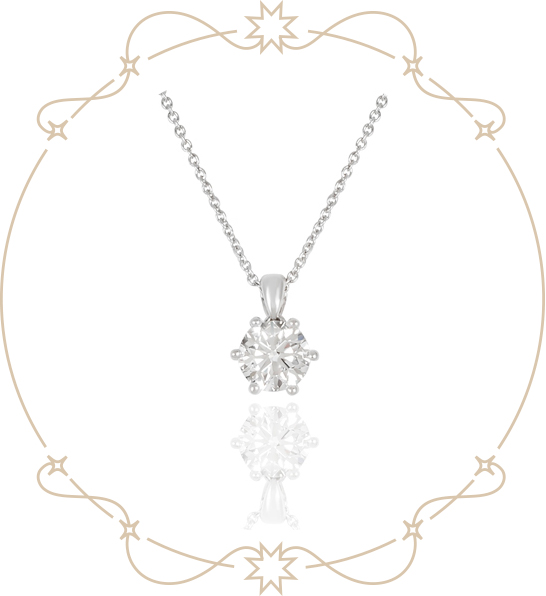The allure of diamonds has captivated humanity for centuries, symbolizing love, prestige, and permanence. However, the rise of lab-grown diamonds has ushered in a paradigm shift in how we perceive these sparkling gemstones. As consumers become more informed about their choices, the question arises: are lab-grown diamonds a legitimate alternative to their natural counterparts? In this exploration, we will delve into the origins, benefits, and controversies surrounding lab-grown diamonds, offering a comprehensive view of their authenticity.
Understanding Lab-Grown Diamonds
To appreciate the essence of lab-grown diamonds, it is essential to understand their genesis. Lab-grown diamonds, also termed synthetic or cultured diamonds, are created in controlled environments using advanced technological processes. Unlike natural diamonds, which are formed over billions of years beneath the Earth’s surface, lab-grown diamonds can be produced in mere weeks. There are two primary methods employed in their creation: High Pressure High Temperature (HPHT) and Chemical Vapor Deposition (CVD). Both methods yield diamonds that possess the same physical, chemical, and optical properties as natural diamonds.
The Science Behind Their Creation
The HPHT technique mimics the natural conditions under which diamonds form. It involves applying extreme pressure and temperature to carbon, forming diamonds in a way that closely resembles geological processes. In contrast, the CVD method involves breaking down carbon-containing gases into carbon radicals, which then crystallize on a substrate, gradually forming a diamond over time. Both of these sophisticated processes ensure that lab-grown diamonds are genuine diamonds, composed entirely of carbon atoms structured in a tetrahedral lattice, just like their earth-mined counterparts.
Distinguishing Features
From a visual standpoint, lab-grown diamonds are nearly indistinguishable from natural diamonds without the aid of advanced gemological equipment. They are graded on the same criteria as traditional diamonds—the Four Cs: Carat, Cut, Color, and Clarity. This congruence in grading means that a lab-grown diamond can have the same breathtaking quality, beauty, and brilliance that consumers have come to expect from natural diamonds.
However, there’s a caveat: lab-grown diamonds may contain distinct characteristics in their inclusions and growth patterns, detectable by trained gemologists. Understanding these nuances adds an intriguing layer to the conversation about authenticity and valuation.
Ethical Considerations
One of the most compelling arguments in favor of lab-grown diamonds is their ethical implications. The diamond mining industry has a long, tumultuous history marked by human rights violations, environmental concerns, and conflict financing—exemplified by the infamous blood diamonds. By choosing lab-grown diamonds, consumers can align their purchasing decisions with ethical values, supporting sustainability and social responsibility. These diamonds are produced with a significantly lower environmental impact compared to traditional mining, as they require less energy and water resources.
Cost-Effectiveness
Another notable advantage of lab-grown diamonds is their affordability. Typically, lab-grown diamonds are priced 20-40% lower than natural diamonds of equivalent quality. This substantial cost saving opens the door for consumers who may have once found natural diamonds financially prohibitive. The ability to procure a larger or higher-quality stone at a more attainable price point adds to the appeal for many buyers.
Consumer Perception
Despite the benefits, the public’s perception of lab-grown diamonds remains mixed. Some purists regard them as inferior imitations, while others embrace them as a modern solution that aligns with evolving values. The distinction between natural and lab-grown diamonds is more than just a matter of composition; it’s a conversation about tradition, prestige, and the very meaning of authenticity.
As consumers become increasingly aware of the implications of their purchases, education is crucial. Providing transparent information about lab-grown diamonds’ origins, benefits, and grading can empower consumers to make informed choices. This shift towards knowledge and understanding is essential in dismantling the stigma surrounding lab-grown diamonds.
The Environmental Impact
In an age where climate change and environmental degradation are pressing concerns, the environmental footprint of diamond production plays a pivotal role in consumer decision-making. Traditional diamond mining can result in habitat destruction, soil erosion, and significant carbon emissions. Conversely, lab-grown diamonds offer a more sustainable alternative, with reduced ecological consequences. By choosing lab-grown, consumers can partake in a luxurious tradition while also contributing to the preservation of the Earth’s resources.
Investment Value
The allure of diamonds as an investment has always been a driving factor for buyers. However, when it comes to lab-grown diamonds, the narrative pivots slightly. While natural diamonds can appreciate over time, lab-grown diamonds typically retain their value differently. As technology advances and production becomes more efficient, there is a possibility that lab-grown diamonds could saturate the market, potentially affecting their investment viability. Thus, buyers considering lab-grown diamonds should weigh their intentions—be it for personal enjoyment or investment—with a clear understanding of market trends.
Conclusion
In the grand tapestry of the diamond narrative, lab-grown diamonds represent both innovation and a shift in societal values. They stand as a testament to how technology can reshape traditional industries while addressing ethical and environmental concerns. As consumers navigate the complex choice between lab-grown and natural diamonds, they are not only selecting a gemstone but are also participating in a broader conversation about sustainability, authenticity, and personal values. Whether one chooses the traditional allure of a natural diamond or the modern integrity of a lab-grown counterpart, the option exists to reflect one’s personal journey in a powerful and enduring symbol.
